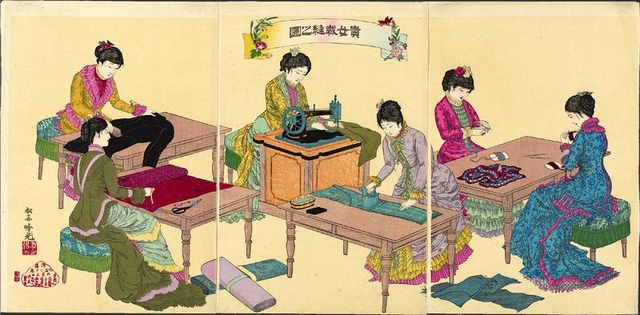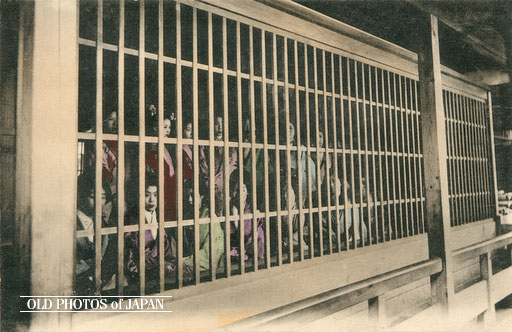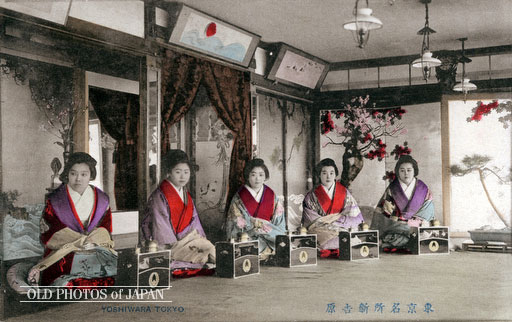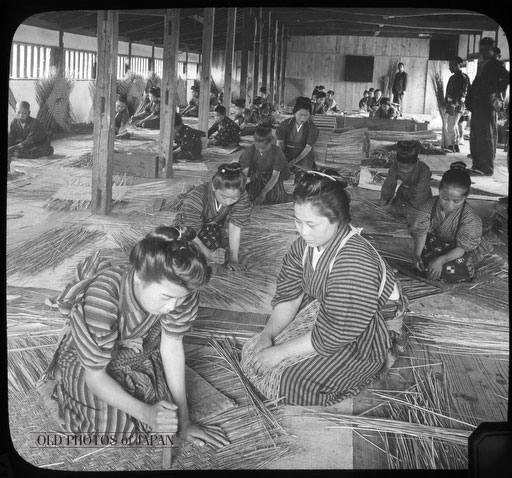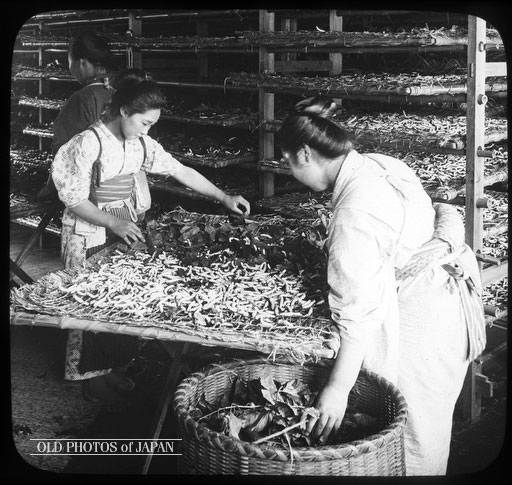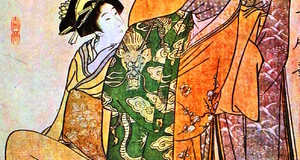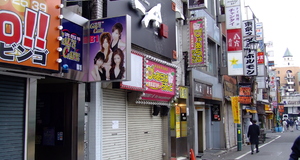Featured Article:Women in Meiji Japan: Exploring the Underclass of Japanese Industrialization
By
2016, Vol. 8 No. 02 | pg. 1/3 | »
KEYWORDS:
With the fall of the Tokugawa Shogunate in the late 1860s, there emerged (or re-emerged) a new center for power in Japan—the Emperor Meiji. With a long drawn restoration of the imperial stronghold, a complete restructuring of the economy, polity and society followed. The decades to come witnessed Japan grow at an unprecedented rate, with its economy reaching heights that were unseen in Asia. But this massive growth1 also came at the cost of Japanese society’s underclasses—the women, the outcastes, the landless laborers, the prostitutes and the peasants. In particular, the hugely popular Japanese narrative of industrial growth in the late 19th century came at the cost of a huge workforce of women who were the spearheads of the Japanese industrial working class. Massive growth came at the cost of Japanese society's underclass, particuarly women. This article explores how the lofty rhetoric of Japanese growth, which is often cited today in other developing nations, is more-or-less silent when it comes to the people who were essentially involved in perpetuating that growth.The ‘cost’ of such a breakneck pace of industrialization was born by society’s “homemakers:” the women, both in the factory and the brothel. This reality, however, remains largely ignored in contemporary discourse. Japanese women during the Meiji Restoration: (left to right) a painting depicting Meiji era women at work; prostitutes on display behind a cage in Yoshiwara, one of Tokyo's red light districts, circa 1910 (roughly six years before the practice, known as harimise, was stopped); Yoshiwara prostitutes in a brothel; Japanese women at work in a bamboo basket factory, circa 1904; also circa 1904, women feeding silk worms in a factory. All photographs © OldPhotosJapan.com. Once the shift of power took place, a complete restructuring of the Shogunate’s political economy took place, as the Emperor now owned all land. Daimyos hence came to be abolished. Land was subsequently reorganized into prefectures, which were 72 in number by 1871, each headed by a governor. The Army and the Education system too were radically altered. Officials/oligarchs like Kido Koin, Omura Musujira, Yamagata Aritomo and so on played key roles in the formation of these new policies. Many of these officials went on long tours of the West (Europe and America) in order to study the various economies and polities. They came back with “modern” ideas of all variations; subsequently engaging in long debates regarding how Japan must “modernize.”2 Politically, Japan moved towards an oligarchic system in the 1880s. The Japanese Parliament—the Diet—was founded in 1890 modeled as a bicameral legislative body. Though the Emperor abolished all formal rights of the erstwhile Daimyos, they did find their way into the House of Lords.3 The emperor now collected taxes directly from the individual landowners.4 This ensured higher agriculture produce and stable revenue for the State; thus, preparing a base for technological innovations. This huge capital, which the state now had, was invested in industries. The Meiji government first went into investment in the heavy industries—Silk and Cotton—and slowly expanded the industrial base by investing also in railway lines5 and mining. By 1893, the Silk industry expanded as the largest exporting industry in Japan. About 42% (102 million pounds) of all export came from the silk factories in Japan. The state was not the only capitalist in Japan. A new class of capitalist families emerged—the Zaibatsu (=‘financial clique’). They ran most of the banks and owned most of the prefectures’ factories. In most cases, the Zaibatsu families were present inside the Meiji administration as bureaucrats and officials and even as the governors of many prefectures. Many of the erstwhile merchant houses like the Mitsui and the Sumitomo took up their new identities very well, as they had been well experienced in trade and capital handling. Others like the Mitsubishi came up as novel zaibatsu families during the Meiji period. Besides these, there was the group of “hired foreigners” (oyatoi gaijin) in the 1870s that were recruited by the Meiji state to guide the industrial revolution in Japan. There was now a need for massive amounts of labor to go forth with the modernization project. This mass of workers was found to be coming from the farmlands of rural Japan; labor had been freed up by the coming of “modern” agriculture. This freed up labor was primarily that of women- the ones who would help out their husbands or fathers in the field were the first to be ‘freed’ as production became more efficient. But it was not easy to bring peasant families to terms with parting their daughters. Nor were the girls willing to leave their village. Thus, nation-wide government propaganda aimed at convincing women to take up work at a factory. Elise K. Tipton writes,
It is an interesting story, though only the local officials (and not the higher officials) sent their daughters off to work at the mill. As the Silk and Cotton industries grew, so did the demand for labor. By 1913, according to an estimate, about 800,000 women workers7 (same as the number of women in English textile industry at the same time8) had been employed by the textile industries. These were mainly underpaid, underage, impoverished rural girls. They were seen as “docile” and “obedient” and thus could be paid low and controlled easily. Upon recruitment, an advance fee was given to the girls’ families. This fee was seen as an additional income, which enabled them to pay off their rent and defray living expenses. But this was in practice, more like a loan from the factory-owners that the daughters had to pay off in their first few months through compensating their wages. Thus, this was very similar to indentured labor; a contract of about 200-300 Yens, lasting for a period of five to seven years. In 1875, wages for a superior worker in the silk factory were about 9.22 yens per year. By 1880, the figure rose to 17.69 yens. In many cases, however, the workers were not paid the minimum wage; they were paid irregularly (Hane). The company deducted the advance fee’s installment9 and paid the girls at the end of the year. Wages rose with the length of service and performance. It was only exceptional girls who were paid the maximum (i.e. official wage) amount, which in most cases was equal to or a little over the stipulated wage. Wages in the cotton factory, too, were low. Average monthly pay for women workers was 4.05 yen. For men it was 6.83 yen.10 Working conditions for these young women were not very favorable. The girls worked for long shifts that lasted well over 12 hours. In some cases, like that of Okaya, average working hours went up to about 14 hours a day. The factories were, like all other, loud and the workers were subject to damp air and heat. The workforce was closely supervised as a grading system was introduced in many plants. An inspector graded the workers, which determined their wages. This does not mean, however that there was any room for “sick leaves.” Slackening the work pace or being inattentive was punished severely by the inspectors; who sometimes fined them or even beat them up. Sexual harassment by these inspectors is hardly documented. The women lived in dormitories owned by the company. The rules were strict; as they were not allowed to stay out late, have visitors. Washing and sanitary amenities were insufficient and bedbugs and lice marred their rooms. This in turn made the spread of diseases very quick and easy. Tuberculosis spread all across Japan in that period. (William Johnston) TB was a serious problem, especially in rural Japan. It was a ruthless killer; no victim was spared by it. Death by TB spread first in the dormitories. Then as some sick girls went back to their village homes to die, they took the disease with them. Thus, the Japanese countryside saw a huge TB epidemic till about the 1920s. TB caused about 40% deaths at the factory and 70% deaths of those who returned to their villages after work. Beriberi was another disease; it is a symptom of the poor diet that they received. Insufficient time for meals and extensive work pressure also led to a rise in gastrointestinal dysfunctions. Cholera epidemics, too, spread quickly amongst the workers. Many of the workers tried to run away from the factories and the dormitories. A team of men, which the employer set out, in order to capture them, captured most of them. The male workers often manned this team. But quoting Misiko Hane, a darker picture appears, “At least those who tried to run away had the will to fight an oppressive system, but many others lost hope and committed suicide.”11 Yet still, most women preferred the factory to the farm. Farm labor was far more demanding than the factory work. Also, the diet offered at the factory12 was far better to the girls as compared to a life of malnourishment and starvation with their families on the farm. Because of their rural background, most of these girls were uneducated and provincial in their outlook. The companies, by 1900s, started offering primary education to their women workers. But the focus of this education was skill-learning and inculcation ideas like loyalty towards the factory. This however, did not mean that the women remained unaware of their rights. Some women began organizing themselves into unions as a result of their exposure to the US labor movements13. Small strikes sporadically came up in Japan as the 19th century was coming to a close, especially after the Sino-Japanese War (1894-1895). However, they had to face stiff opposition from both the companies and the state; the general sentiment in Japan at that time was to “progress” (as the West had), and for this they were ready to sacrifice anything. Labor Union movements like these were seen as a roadblock in the opinions of the political elites as well as most citizens of Japan at that time. The government was bent upon complying with the wishes of the capitalists, as the charge by a labor organization went, in Japan. Besides this, it was difficult for strike leaders to sustain their movements as the factory owners threatened the workers that they would not be paid their wages or simply fired if they did not show up for work. The companies bought off many leaders and most of the movements were loosely organized. Most of the major strikes and labor movements thus, ended in failure. Given all of these factors, it is imperative to note how oppressive the conditions would have been; such that a huge number of self-proclaimed and societally enforced “docile” and “obedient” women had to defy the authorities and go on strikes; the claim of benevolent paternalism by the employers was obviously a farce.Continued on Next Page » Suggested Reading from Inquiries Journal
Inquiries Journal provides undergraduate and graduate students around the world a platform for the wide dissemination of academic work over a range of core disciplines. Representing the work of students from hundreds of institutions around the globe, Inquiries Journal's large database of academic articles is completely free. Learn more | Blog | Submit Latest in History |

